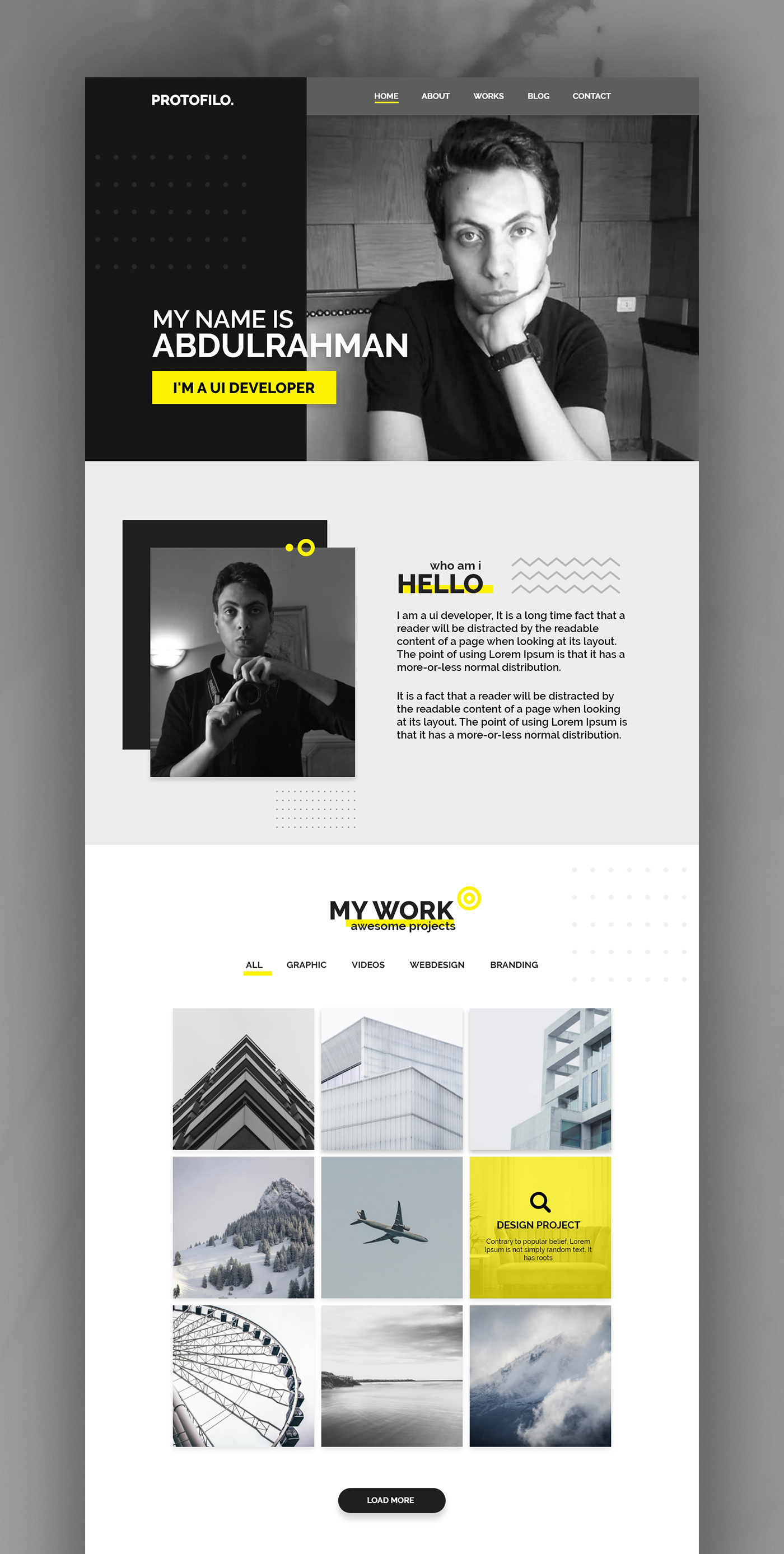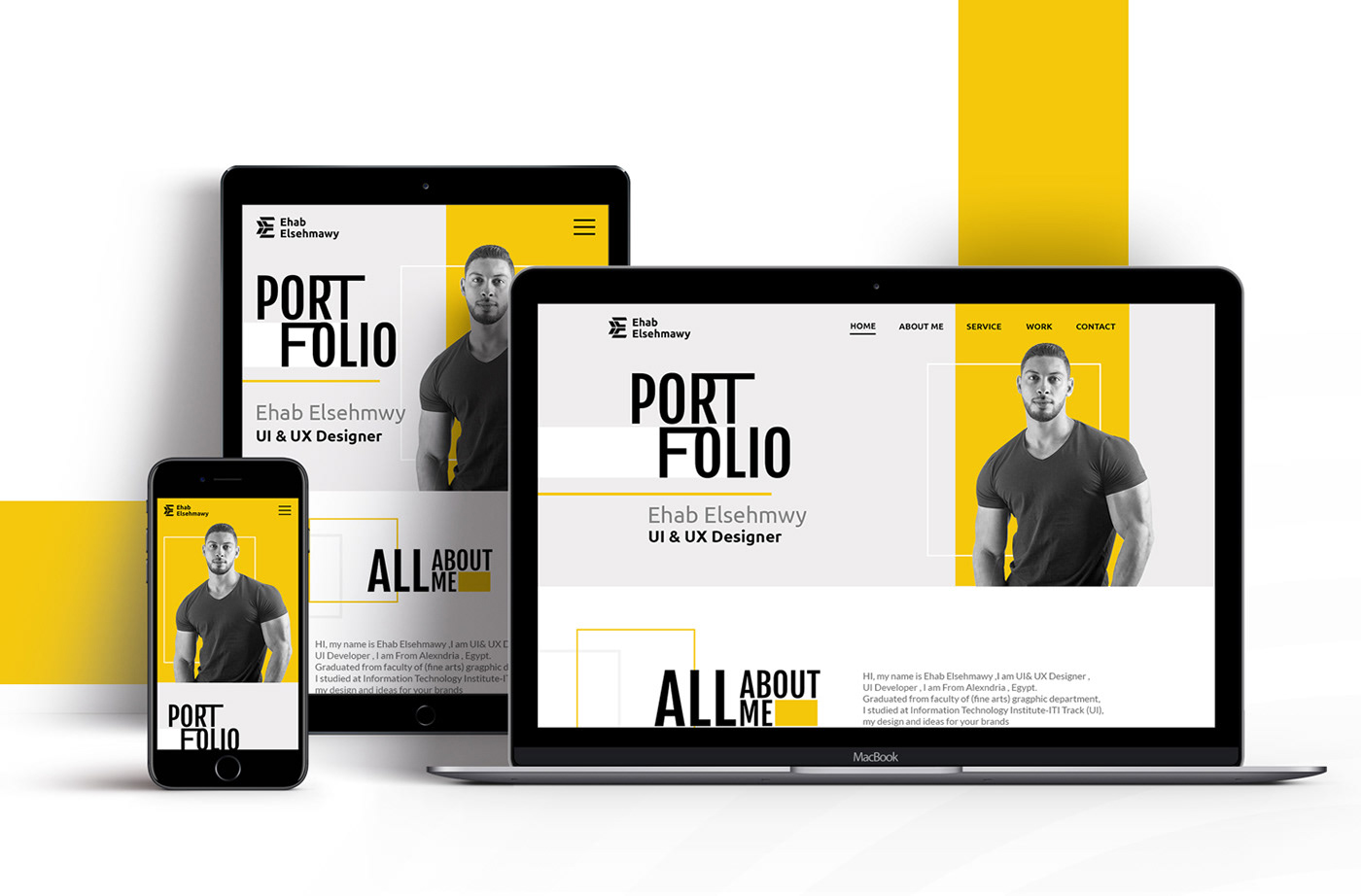Creating a standout portfolio on Behance is just the beginning of showcasing your creative talents. One crucial step that many artists overlook is adding a Contact Page. This feature not only enhances your professional image but also makes it easier for potential clients and collaborators to reach you. In today’s digital world, accessibility is key, and having a dedicated space for contact information can have a significant impact on the opportunities that come your way. So, let’s dive into how to set up your contact page and why it matters!
Why Having a Contact Page is Important for Your Portfolio

When you showcase your best work on Behance, you might think that having a stellar portfolio is enough. But wait—consider the importance of a Contact Page! Here’s why you shouldn't skip this essential element:
- Accessibility: Your audience should be able to reach you easily. By providing clear contact information, you lower the barrier for potential clients to get in touch.
- Professionalism: A well-organized contact page adds a touch of professionalism to your portfolio. It shows that you take your work and your future collaborations seriously.
- Networking Opportunities: You never know where your next big opportunity might come from. Whether it’s a brand wanting to collaborate or a fellow artist seeking feedback, a contact page facilitates connections.
- Increased Engagement: Visitors are more likely to engage with your work if they have an easy way to reach out. This could lead to new projects or even simply meaningful interactions with your followers.
Now, let’s break down some elements that make a great contact page:
| Element | Description |
|---|---|
| Email Address | Your primary means of communication. Make sure it’s professional! |
| Social Media Links | Links to platforms like Instagram or LinkedIn where potential clients can follow your work. |
| Contact Form | If Behance allows, a simple form can make it easy for users to send messages directly. |
| Location | Optionally include where you’re based to attract local clients or collaborators. |
In summary, a well-crafted contact page is more than just a list of your contact details; it’s a gateway for collaboration and communication. By ensuring your portfolio is reachable, you significantly increase your chances of landing exciting projects and expanding your network in the creative community. Don't wait any longer—get your contact page up and running on Behance today!
Also Read This: How to Edit Your Behance URL: Changing Your Portfolio Link for Better Branding
3. Step-by-Step Guide to Creating a Contact Page on Behance

Creating a contact page on Behance is a straightforward process, but knowing the steps can make it even easier. Here’s a quick guide to help you set up your contact page in no time!
- Log In to Your Behance Account: Start by heading over to Behance.net and logging into your account. If you haven’t registered yet, now is the time to get started!
- Navigate to Your Profile: Once you're logged in, click on your profile picture in the top right corner. This will direct you to your profile.
- Edit Profile: Look for an option that says “Edit Profile.” Click on it. This is where you can update various sections, including your contact information.
- Add a Contact Section: In the Edit Profile menu, scroll down until you find the “Contact” section. You’ll want to include a dedicated space for visitors to reach out to you.
- Fill in Your Details: Specify how you’d like people to contact you. You can add:
- Email address
- Social media links (like LinkedIn or Twitter)
- Website or blog URL
And voilà! You've successfully created a contact page on Behance that invites potential clients and collaborators to reach out. Keep in mind that it’s a good idea to periodically revisit your contact information to ensure it remains accurate and up-to-date.
Also Read This: How to Shorten Your Behance URL for Easier Sharing
4. What Information to Include on Your Contact Page

Your contact page is not just a formality—it's a vital component of your portfolio that connects you with your audience. Here’s what to consider including:
- Email Address: This is the most crucial piece of information. Ensure you use a professional email rather than a casual one. Something like [email protected] works best!
- Social Media Links: If you're active on platforms like Instagram, Twitter, or LinkedIn, include links to these profiles. They offer additional touchpoints for your audience to connect with you and see your work in different contexts.
- Website or Portfolio URL: If you have a personal website or a more extensive portfolio, make sure to include it here. This is where potential clients can see your work in greater detail!
- Short Bio: Adding a brief paragraph about yourself can make your contact page more personable. Discuss your expertise, what you love about your work, and any notable achievements.
- Availability: If you're open to freelance work or collaborations, state your availability. Something as simple as "Currently available for freelance projects" can attract opportunities.
- Response Time: Set expectations by indicating how long it typically takes you to respond to inquiries. For instance: "I usually respond within 48 hours."
- Contact Form (if applicable): If you prefer to have a contact form rather than direct email listings, configure this feature. It simplifies the process for visitors who want to reach out.
By following these suggestions, you can create a comprehensive and inviting contact page that encourages visitors to engage with your work. Remember, your contact page is often the first interaction potential clients have with you, so make it count!
Also Read This: Becoming a Contributor on Shutterstock: A Guide to Selling Your Images
5. Customizing Your Contact Page for Maximum Impact

When it comes to showcasing your work on Behance, your contact page is more than just a form—it’s your opportunity to make a lasting impression. A well-customized contact page can help you connect with potential clients or collaborators more effectively. Here are some tips to ensure your contact page stands out:
- Consistent Branding: Make sure your contact page aligns visually with the rest of your portfolio. Use the same fonts, colors, and logos to create a cohesive look. This reinforces your brand identity and makes you more memorable.
- Clear Call to Action: Always include a clear, compelling call to action (CTA). Whether you want visitors to send you an email, connect on social media, or fill out a form, make it crystal clear what the next step should be. Use enticing language that encourages them to take action.
- Personal Touch: Adding a warm, friendly message can help humanize your page. Consider including a short intro about yourself, which can make visitors feel more connected. For instance, say something like, “I’d love to hear from you! Whether you have a project in mind or just want to chat, don’t hesitate to reach out!”
- Contact Information Visibility: Ensure that your email and other contact details are easily visible. Avoid burying this information in the fine print. A quick glance should reveal how visitors can get in touch with you without any hassle.
- Optimized for Mobile: A significant amount of web traffic comes from mobile devices, so ensure that your contact page is responsive. Test it on different devices to guarantee that everything looks good and functions smoothly.
Customizing your contact page isn’t just about aesthetics; it’s about creating an effective communication channel. By implementing these suggestions, you’ll invite more opportunities and foster connections. Remember, your contact page is the gateway to new collaborations, so make it count!
Also Read This: How to Make Behance Pages Look Awesome: Design Tips for an Impressive Portfolio
6. Best Practices for Managing Your Behance Contact Page
Managing your Behance contact page effectively involves more than just setting it up and leaving it unattended. Regular attention and updates are necessary to keep the lines of communication open and ensure potential clients get the best impression of you. Here are some best practices to consider:
- Regular Updates: Keep your contact information up-to-date. Whether you change your email, phone number, or social media links, it’s essential to make these adjustments promptly so you don’t miss out on potential opportunities.
- Check In Periodically: Once in a while, take some time to check your contact page. Ensure that your welcome message or introduction feels current and hasn’t gone stale. Adding a fresh blurb every few months can show visitors that you’re active and engaged.
- Engage with Inquiries Promptly: If someone reaches out to you via your contact page, respond as quickly as you can. A prompt reply not only demonstrates professionalism but also shows potential clients that you care about their inquiries.
- Use Analytics Wisely: If Behance provides analytics or insights on your contact activity, take advantage of this data. Understanding how visitors interact with your contact page can offer valuable insights into what’s working and what might need improvement.
- Solicit Feedback: Don’t hesitate to ask for feedback from your contacts or colleagues about your contact page. They may offer insights that you hadn’t considered, leading to improvements you didn’t know you needed.
By following these best practices, you’ll not only enhance how you manage your contact page but also improve your overall communication strategy. Remember, making it easy for people to reach you can lead to exciting new prospects and collaborative adventures!
Also Read This: Step-by-Step Guide to Uploading PDFs on Behance for Your Portfolio
7. Common Mistakes to Avoid When Setting Up Your Contact Page
Creating a contact page for your Behance portfolio is crucial, but it’s easy to trip over some common pitfalls. Let’s make sure you steer clear of these mistakes to ensure your contact page is effective and user-friendly!
1. Lack of Clear Contact Information
One of the biggest mistakes is being vague about how visitors can get in touch. Always include:
- Your email address
- Links to social media profiles
- A contact form (if possible)
2. Complicated Contact Forms
While having a contact form is great, it should be simple! Avoid overwhelming visitors with too many fields. Stick to essentials like:
- Name
- Message
More fields can lead to abandoned forms, so keep it concise!
3. Not Providing Response Time Expectations
People want to know how soon they can expect a reply. Let them know if you typically respond within 24 hours or a few days. Clear expectations can cut down on follow-up emails.
4. Failing to Personalize Your Message
Your contact page should reflect your unique brand. Avoid using generic language. Instead, add a friendly greeting like:
“Hey there! I’m thrilled you’re interested in connecting with me!”
5. Ignoring Mobile Optimization
Many people browse on their phones, so if your contact page isn’t optimized for mobile, you could miss out. Check how it looks on various devices to make sure it’s easy to use.
6. Not Including a Call-to-Action
Encourage visitors to reach out! A simple “I’d love to hear from you” or “Let’s collaborate!” can entice them to fill out that form or send an email.
7. Unprofessional Email Address
Having a professional-looking email is crucial. If you’re still using something like [email protected], consider upgrading to a domain-specific email. It’s a small change that has a big impact!
By avoiding these common mistakes, you can create a contact page that invites communication and enhances your overall portfolio!
8. Conclusion: Enhancing Your Portfolio with a Contact Page
A well-crafted contact page is more than just a form; it’s an essential tool for growing your network and career. By making it easy for potential clients, collaborators, and fans to get in touch, you increase your chances of landing new opportunities.
Think of your contact page as a welcoming doorway to your professional world. It should reflect your personality, be visually appealing, and function smoothly.
This is the moment to rethink your communication approach:
- Is your contact information easy to find?
- Are you presenting yourself authentically?
- Is your page user-friendly on all devices?
When you answer these questions positively, you're on the right track! As you implement the tips we discussed, you’ll find that a killer contact page not only boosts your portfolio but also opens doors to new collaborations and projects.
So, don’t underestimate the power of a solid contact page. It’s your chance to make a great first impression and start meaningful conversations. Now, go ahead and enhance that portfolio of yours – your future connections are waiting!
 admin
admin








